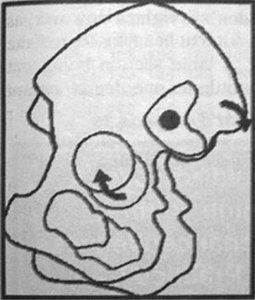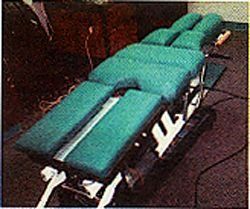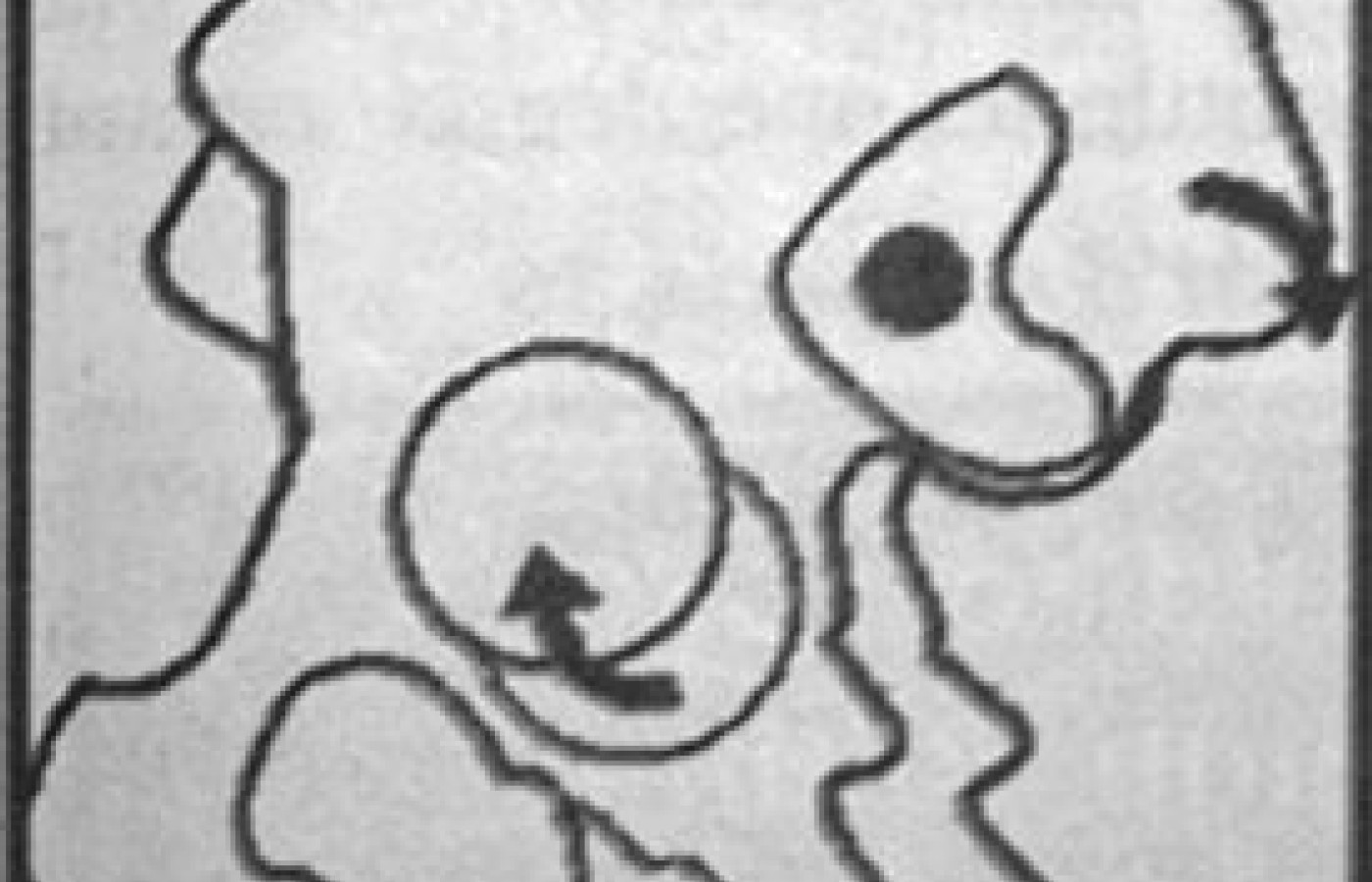Recent laws in New Jersey and California represent a disturbing trend that will negatively impact a practice’s ability to collect monies from patients, as well as expose them to significant penalties if the practice does not follow the mandatory guidelines to a T. Please be aware that a similar law may be coming to your state. The time to act is before the law is passed.
Investigating the Short Leg Phenomenon: The Friction-Reduction Hypothesis
Sometime in 1992, Drs. Nansel, Waldorf and myself were able to show that adjusting the cervical spine could measurably affect the lumbar paraspinal muscle compliance, and probably its tone.1 While helping write up the results for publication, I paid a visit to the Stanford Medical School library to dig up articles on the tonic neck reflex, by which specific head positions are known to influence the activity of the various muscle groups, which we thought related to our experimental outcome.
Within about 15 minutes I came across an intriguing article dated 1962, Hellebrandt's review article and photographic record of his own extensive research on the tonic reflex in humans and other mammals.2 Shortly into that article I was flabbergasted to see a photograph of a supine subject, legs suspended off the table by a rope mechanism, whose left/right legs would alternately lengthen or shorten as the subject turned his head to either side. Why would a medical researcher be performing what amounts to a supine cervical Derifield leg check? Hellebrandt found that head rotation would alter the ratio of flexor and extensor tonus in both extremity and paraspinal muscles, so much that there would be a change in relative leg length of a couple of inches, provided the subject's legs were not in contact with the table.
As I continued to pore through the article, staring at the rope contraction that suspended the legs and trying to grasp the peculiar perspective of the photograph, a sudden realization overcame me. I stood up, hands on table and mouth wide open, and asked myself the following question: how could a chiropractor, performing a leg check, ignore the potential friction of the subject"s legs against the table? How could such friction not affect what happens when the subject turns his head, is adjusted, or clinically altered in any other way?
Out of this seminal experience the friction-reduction hypothesis was born. Friction artifact at the patient-table interface could interfere with the detection of underlying postural asymmetry, such as prone leg length inequality. This friction would prevent the left and right legs from moving independently enough to reflect subtle differences in the left/right tone of the suprapelvic musculature, the underlying asymmetry that in my opinion most likely accounts for the functional short leg. I had long ago abandoned more traditional short leg theories, such as the one which has a posterior rotation of the innominate bone swinging up the acetabulum (see Figure 1), and especially the genre of short leg theory that is based on pure neurobabble (some subluxation, involving some tract, affects some cortical area, the reticular formation, or some tract, which affects some muscle).

Figure 1: Allegedly, as the innominate rotates posteriorly about the SI joint, the acetabulum is swung superiorly. This would luxate the symphysis pubis.
Friction would also be expected to prevent the pelvic and possibly more cephalad body regions from undergoing the kind of compensatory displacements that one supposes would be required to accommodate the generation of a functional short leg. There is no reason to expect that the outcome would be the same when the patient wears highly textured clothing on an upholstered table top, as compared with smooth clothing on a slick table top. Chiropractic clinicians and investigators have apparently not appreciated that patient-on-table friction probably greatly reduces or even obliterates the responsiveness of given bodily regions to provocative diagnostic forces or changes in clinical condition. This friction could also greatly confound the initial leg length inequality assessment, given the arbitrary manner in which the patient often mounts the examination table.
So, one day late in 1993, while lecturing in my chiropractic procedures course, I got to the part about the cervical Derifield procedure and why I don't do it. I showed my class the photograph of the hanging legs, as I always do, explaining that leg length changes with head rotation might reflect normal physiology. I announced my intention to some day replicate the study, but with the subject prone (the typical Derifield examination position). Fearing that suspending the legs of the prone patient would hyperextend his knees and possibly bias the outcome, I suggested that it might be better to achieve friction-reduction by placing the subject's legs on independently moving leg pieces. I said there should also be another sliding table section under the lumbopelvis to further accommodate relative lower extremity movements.
A couple of the students said that this "split leg" table would be a really neat device. One of them came up to me after class and said, "Okay Dr. Cooperstein, let's build this table. Saturday afternoon. Your garage or my living room?" A few days later, in about an hour, then-student (now Dr. Dan Bricker) and I sketched out a mechanical drawing of the friction-reduced table on the back of a napkin while feasting on cholesterol, sodium chloride, and caffeine at the local eatery. We built our first prototype (in my garage) during the holiday season, late 1993.
It was a little ugly, but worked rather well. We used very expensive and remarkably slippery file drawer slides under the legs, and installed a lazy Susan under the lumbopelvis to allow it rotational movements. We could see right off the bat in our first study (which consisted of having my wife Maribel get on and off the table several times) that the lazy Susan would not do. In the friction-reduced environment, it could easily be seen that the lumbopelvic piece did not accommodate relative leg movements by rotating around some centrally located intrapelvic Z-axis, as the lazy Susan device would have it. Rather, it translated away from the short leg side and rotated around an axis somewhere near the opposite hip. We would need to allow universal frontal plane motion in the lumbopelvic piece, rather than make any guesses as to how lumbopelvic movements accommodate functional leg length inequality.
I took the working contraption up to my chiropractic office for a few days to put some of my patients on it. To allow the lumbopelvic piece to make up its own mind as to how it wanted to move, I placed a muffin pan with a large marble placed in each of its dozen wells under the lumbopelvic piece. Patient Brad, a hardware hacker and an artist to boot, got a pretty good chuckle over the muffin pan/marble arrangement. He spent an entire hour with me discussing the wonderful world of ball bearings and ball transfers. As I soon as I could escape from my office, I made a field trip to the other side of the tracks in West Oakland, where I was able to score a box of ball transfers that eventually led to a redesigned second prototype of the friction-reduced table.
In the meantime, Dan and I had loaned our first prototype to another investigator well-known for his work on leg checks. We arranged for this table to be returned to us at the CORE conference in mid-1994, since all parties concerned were planning to be there. As Dan and I strolled around the exhibiting area, checking out this and that, he suddenly struck up a conversation with one of the table guys about an "innovative table design" that we were working on. I ventured something to the effect, "I guess chiropractors approach you all the time with stories about new kinds of tables." But the table man (T.A. Cox, president of Spinalight, Inc.) rapidly corrected this impression: "I have not seen one really new concept in table design since I've been in the business." He asked when and where he could see a prototype. We explained that we just happened to have one with us in our hotel room. About an hour later, after having looked over our friction-reduced table with great interest, he agreed to build, according to our specifications, our friction-reduction apparatus and table segment securing mechanism on to his best Hi-Lo type of table. He would ship it from his factory in Woodstock, Georgia to Palmer-West in San Jose, California.
A month or two later, on schedule, T.A. shipped us his implementation of our design, adding a few improvements of his own (Figure 2). It featured independently moving lumbopelvic, thoracic, and upper thoracic pieces, each of which could be locked into a stationary position, as desired, by means of electromagnets that were controlled either jointly or singly by a switching console. The leg pieces as well could be secured by engaging electrogmagnets that would contact their ferromagnetic undersurfaces. At this time, the measuring apparatus for determining leg positions had not yet been designed or implemented.

Figure 2: The friction-reduced table has independent moving lumbopelvic, thoracic, and upper thoracic pieces, each of which can be locked into a stationary position.
It's too bad the double tractor-trailer that transported this first friction-reduced Hi-Lo table across the continent crashed and overturned somewhere outside of St. Louis in bad weather. You may wonder what could possibly get damaged a heavy table thoroughly bolted down inside a well-designed wooden crate? The answer is ... everything! We are still finding things that are bent and don't fit right, a year and half later. It turns out that in a friction-reduced environment, a table section being off-plumb by as little as one degree creates artifactual table section displacements that may confound the physiological phenomena being investigated. Although the top of our table certainly looks flat enough, parts of it are actually saddle-shaped. Long live crow bars and washers!
Our colleague Robert Jansen joined the team some time ago. We submitted our first papers on the friction-reduced table to the Washington Centennial scientific symposium.4,5 At that point we were still going blind trying to measure relative leg movements using, of all things, an actual ruler. More recently, Jansen has implemented a photoelectric sensor system in which leg movements alter the amount of light energy that strikes an array of solar panels. This in turn alters the voltage that is passed through an analog-to-digital card to data acquisition software. The object-oriented programming language that our software uses allows us to condition the data in very complex ways without writing a line of code, although the software itself is far from simple.
It took a lot of work to increase the signal-to-noise ratio to an acceptable level. We are now able to easily distinguish millimetric events from line noise and other artifacts. The acquisition of an uninterruptible power supply between the AC power-in and the computer seems to have eliminated the last important source of "events" that are traceable to the measuring apparatus (and the local electrical utility company) rather than the experimental subjects. When we lower a patient to the prone position, kill the magnets, and let the sliding table segments slide, the graphic result on the video display terminal is a pair of horizontal lines, each representing the movement of a leg. The vertical distance between the lines represents, finally, an objectively measured functional short leg. The measurement is dynamic, sampled as frequently as desired: currently 11 times per second.
We are more than moderately interested in what will happen to the absolute and relative leg positions when we eventually alter some clinical condition: turn the subject's head, perform an isolation test, or perhaps suddenly expose the patient to an African hunting mask. For now, we are concentrating on normative studies, sampling ostensibly normal populations lying prone for two minutes. We are quite pleased with the initial results. Bob Jansen is especially delighted to report that when we do nothing to the patient, nothing happens. To a researcher, nothing in life is more beautiful than a smooth base line.
I would like to thank T.A. Cox for making us a friction-reduced table and shipping it to the college for research purposes; Palmer Research Director Bill Meeker for supporting our efforts and handling our equipment needs; and Palmer-West President Peter Martin, the consummate chiropractor and consummate chiropractic college president. Dr. Martin, a frequent visitor to the research lab, never misses an opportunity to ask us about and discuss the project. He is arguably more interested than anyone else in our work, indifferent as to whether it proves or disproves something about leg checks or anything else.
References
- Nansel D, Waldorf T, Cooperstein R. The effect of cervical spinal adjustments on lumbar paraspinal muscle tone: evidence for facilitation of intersegmental tonic neck reflexes. Journal of Manipulative and Physiological Therapeutics 1993;15(10).
- Hellebrandt FA, Schade M, Carns ML. Methods of evoking the tonic neck reflexes in normal human subjects. American Journal of Physical Medicine 1962;41(3):90-139.
- Cooperstein R. Functional leg length inequality: geometric analysis and an alternative muscular model. 8th Annual Conference on Research and Education. Monterey, California, 1993:202-203.
- Cooperstein R, Bricker D, Jansen R. Amplification of absolute and relative left and right leg displacements as a function of head rotation: the advantages of using a friction-reduced multi-segmented table. Washington, DC: Chiropractic Centennial Foundation, 1995.
- Cooperstein R, Bricker D, Jansen R. Confirmation of leg length inequality as a stable, objectively-measured entity: The construction and implementation of a friction-reduced, multi-segmented table. Washington, DC: Chiropractic Centennial Foundation, 1995.
Robert Cooperstein, DC
Faculty member,
Palmer College of Chiropractic West
e-mail: Drrcoop@aol.com



